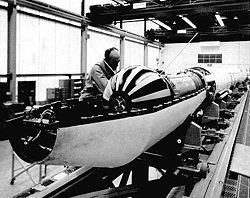Operator CNR Mission duration ~272 days Inclination 37.8° Period 1.6 hours Launch mass 115.2 kg | COSPAR ID 1964-084A Launch date 15 December 1964 Inclination 37.8° Launch mass 115.2 kg | |
 | ||
Mission type IonosphericEarth scienceAstrophysics Similar WRESAT, Intasat, Brasilsat‑A1, Bulgaria 1300, PoSAT‑1 | ||
San Marco 1, also known as San Marco A, was the first Italian satellite, and the first non-Soviet/US spacecraft. Built in-house by the Italian Space Research Commission (Italian: Commissione per le Ricerche Spaziali, CRS) on behalf of the National Research Council, it was the first of five as part of the Italian-US San Marco programme.
Contents
The name of the spacecraft series comes from the San Marco platform, a Jackup barge used as an offshore launch pad for the main phase of the project. San Marco (English: Saint Mark) is the patron saint of Venice, often depicted as aiding Venetian sailors.
Development
In 1961 the Italian government, led by Amintore Fanfani, approved a plan for the development of an indigenous satellite research programme that had earlier been proposed by the CRS. At the time only the Soviet Union and the United States had launched spacecraft into orbit and Italy lacked a suitable launcher and crews trained in firing orbital rockets. As a result, a cooperative plan was developed with the American space agency NASA who would provide the rockets and the launch crew training for Italians to operate them.
The spacecraft was built by members of the CRS, a group of distinguished Italian scientists and engineers including Edoardo Amaldi, co-founder of major European scientific organisations including CERN and ESRO.
The mission was principally a test-flight of a real satellite to gain experience before launches from Italy's own San Marco platform began, the last of 3 phases of the project.
Mission
The primary mission of the San Marco series was to conduct ionospheric (upper-atmosphere) research. As a test satellite San Marco 1 contained relatively few experiments;
Launch
San Marco 1 was launched by an Italian crew using an American Scout rocket from Wallops Flight Facility, Virginia, US. Launched on December 15, 1964 at 20:24:00 UTC the satellite destructively re-entered the atmosphere on September 13, 1965.
